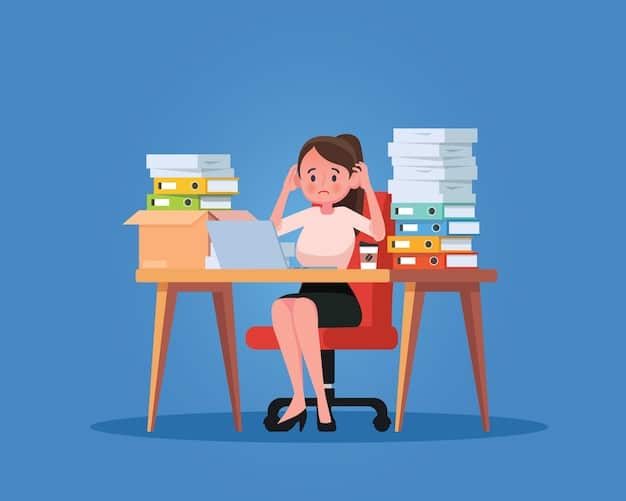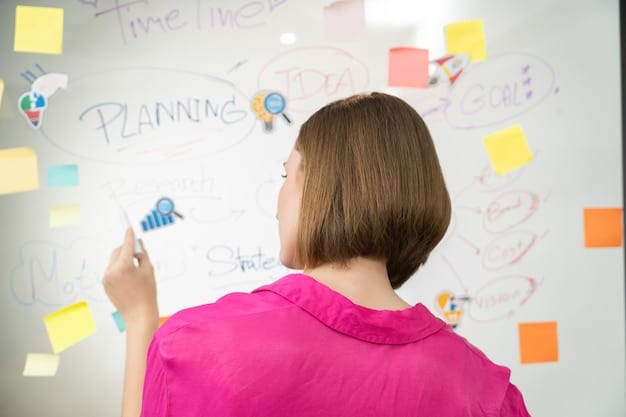Eat The Frog: Boost Productivity by Tackling Hard Tasks First

Eat the Frog is a productivity technique that involves tackling your most challenging task first thing in the morning to increase productivity and reduce procrastination throughout the day.
Feeling overwhelmed by your to-do list? The Eat the Frog method, inspired by a quote attributed to Mark Twain, suggests you tackle your most challenging task first thing in the morning. Let’s explore how this strategy can revolutionize your productivity and help you conquer your day!
What Does ‘Eat the Frog’ Really Mean?
At its core, ‘Eat the Frog’ encourages you to confront your most dreaded task—your “frog”—before anything else. This approach isn’t about enjoying the unpleasant; it’s about eliminating the stress and anxiety that comes with procrastination.
By tackling the most challenging task first, you set a positive tone for the entire day. It’s like clearing the biggest obstacle early on, making everything else seem more manageable.
The Origin of the ‘Eat the Frog’ Philosophy
The catchy metaphor originates from a quote often attributed to Mark Twain: “Eat a live frog first thing in the morning, and nothing worse will happen to you the rest of the day.” While the exact source of the quote remains debated, its message has been popularized by productivity experts like Brian Tracy.
Brian Tracy’s Interpretation
Brian Tracy, renowned for his work in personal and professional development, embraced and popularized the ‘Eat the Frog’ concept in his book “Eat That Frog!: 21 Great Ways to Stop Procrastinating and Get More Done in Less Time.” Tracy’s interpretation focuses on identifying the most important task each day and tackling it head-on.

Here’s how Tracy frames it:
- Identify Your Frogs: Determine the tasks that will have the biggest impact on your goals.
- Prioritizeruthlessly: Focus on the one frog that, if completed, would provide the greatest value.
- Eat It First: Resist the temptation to start with easier, less important tasks.
By adopting this mindset, you not only accomplish important tasks but also build momentum and confidence for the rest of the day. It’s about making a conscious decision to face your biggest challenges head-on, leading to a more productive and fulfilling work life.
Essentially, ‘Eat the Frog’ is a method to eliminate procrastination, reduce stress, and enhance overall productivity by prioritizing and tackling the most challenging tasks first.
Why Tackle Your Toughest Task First?
The idea of tackling the toughest task first taps into some pretty powerful psychological principles that can significantly boost productivity and well-being. Let’s explore the various facets of why this simple strategy can be so effective.
Dealing with the most challenging task immediately allows you to leverage moments when your mental energy is at its peak. This prime window of alertness and focus ensures that you’re tackling complex problems with optimal cognitive resources.
Enhanced Focus and Concentration
In the morning, you typically have fewer distractions vying for your attention. Emails haven’t piled up, meetings haven’t started, and the general chaos of the day hasn’t fully kicked in. This relative tranquility allows for better concentration on the task at hand.
Reduces Decision Fatigue
Decision fatigue is a real phenomenon, and it depletes mental energy as the day progresses. By making the decision to tackle the most important task first thing, you eliminate the internal debate about which task to start with. This conserves mental energy for the actual work, rather than wasting it on decision-making.
Moreover, consider these points:
- Overcoming Procrastination: By tackling the tough task head-on, you eliminate the tendency to procrastinate, which can lead to anxiety.
- Building Momentum: Completing a challenging task early builds a sense of accomplishment that sets a positive tone for the rest of the day.
- Reducing Stress: Knowing that the most difficult task is already out of the way can significantly reduce stress and anxiety levels.
Ultimately, prioritizing your toughest task allows you to navigate your day with a sense of accomplishment and control, enhancing both productivity and overall well-being.
How to Identify Your ‘Frog’
Identifying your “frog” involves a clear understanding of your priorities and the impact of each task on your overall goals. This process might seem straightforward, but it requires careful consideration and strategic thinking.
Start by listing all the tasks you need to accomplish. Then, evaluate each task based on its impact, urgency, and importance.
Assessing Tasks Based on Impact and Urgency
When assessing tasks, consider these questions:
- What task will have the most significant impact on my overall goals?
- Which tasks are most urgent, requiring immediate attention?
- Are there any tasks that, if completed, would make other tasks easier or unnecessary?
Using the Eisenhower Matrix
The Eisenhower Matrix, also known as the Urgent-Important Matrix, is a powerful tool for prioritizing tasks. It categorizes tasks into four quadrants:
- Urgent and Important: Tasks that need immediate attention and contribute significantly to your goals. (Do these first)
- Important but Not Urgent: Tasks that contribute to your goals but don’t have immediate deadlines. (Schedule these)
- Urgent but Not Important: Tasks that demand immediate attention but don’t contribute to your goals. (Delegate these)
- Neither Urgent nor Important: Tasks that don’t contribute to your goals and don’t require immediate attention. (Eliminate these)

Your “frog” is likely a task that falls into the “Urgent and Important” quadrant or a task from the “Important but Not Urgent” quadrant that, if left unattended, could become urgent. Consistently evaluating tasks through this framework helps in identifying and prioritizing the most impactful items.
Identifying your “frog” is a continuous process. As circumstances change, so do your priorities. Make it a habit to regularly assess your tasks, ensuring you’re always tackling the most impactful and important ones first.
Practical Steps to Implement ‘Eat the Frog’
Implementing the ‘Eat the Frog’ method involves more than just knowing what your “frog” is. It requires establishing a routine and creating an environment conducive to tackling the most challenging tasks first thing in the morning.
Start by setting clear goals and planning your day. Preparation streamlines your morning, minimizing distractions and allowing for a focused approach.
Setting Clear Goals and Planning Your Day
Before going to bed, take a few minutes to write down your goals for the next day. This proactive approach helps you clarify what needs to be done and sets a clear course for the morning.
Creating a Conducive Environment
A distraction-free environment is critical for focused work. Here are some tips:
- Minimize Distractions: Turn off notifications, silence your phone, and close unnecessary tabs on your computer.
- Dedicated Workspace: Designate a specific area for work, signaling to your brain that it’s time to focus.
- Communicate Boundaries: Inform family members or colleagues that you need uninterrupted time to work.
Breaking Down Large Tasks
If your ‘frog’ seems too daunting, break it into smaller, more manageable chunks. This approach makes the task less intimidating and easier to start.
Consistency is key to making ‘Eat the Frog’ a habit. The more you practice, the easier it becomes to identify your ‘frog’ and tackle it without hesitation. Embrace the process.
Overcoming Procrastination and Resistance
Even with the best intentions, resistance and procrastination can still creep in. Overcoming these obstacles requires understanding their root causes and implementing effective strategies to combat them.
Recognize the reasons behind your procrastination. Sometimes, it’s fear of failure or perfectionism. Other times, it’s simply feeling overwhelmed by the task at hand.
Recognizing the Root Causes
Common triggers for procrastination include:
- Fear of Failure: The belief that you won’t be able to complete the task to a satisfactory standard.
- Perfectionism: The desire to perform flawlessly, leading to paralysis.
- Lack of Motivation: A lack of interest or enthusiasm for the task.
- Overwhelm: Feeling burdened by the sheer size or complexity of the task.
Strategies to Combat Procrastination
Once you understand the root causes, you can implement specific strategies to overcome procrastination:
- Pomodoro Technique: Work in focused 25-minute intervals followed by a 5-minute break to maintain concentration and prevent burnout.
- Reward System: Set up a reward system for completing tasks, providing an incentive to start and finish.
- Accountability Partner: Share your goals with a friend, family member, or colleague who can provide support and hold you accountable.
- Positive Self-Talk: Replace negative thoughts with positive affirmations to boost confidence and motivation.
Overcoming procrastination and resistance is a continuous journey. Be patient with yourself, and celebrate small victories along the way.
Long-Term Benefits of the ‘Eat the Frog’ Method
The advantages of consistently applying the ‘Eat the Frog’ method extend far beyond just accomplishing daily tasks. Over time, this practice can lead to significant improvements.
By making it a regular habit, you’ll likely notice a positive shift in your stress and anxiety levels. The sense of control and accomplishment fosters a greater sense of calm and confidence, leading to reduced stress and improved mental well-being.
Improved Time Management Skills
The discipline required to identify and tackle the most important tasks first translates into better time management skills overall. You become more adept at prioritizing, planning, and allocating time effectively.
Increased Productivity and Efficiency
As you consistently focus on high-impact tasks, your overall productivity soars. You accomplish more in less time, and the quality of your work improves due to increased focus and reduced stress.
The ‘Eat the Frog’ method is a life-changing habit. Embrace it, and enjoy the benefits of a more productive and fulfilling life.
| Key Point | Brief Description |
|---|---|
| 🎯 Prioritize Tasks | Identify the most impactful tasks using methods like the Eisenhower Matrix. |
| ⏱️ Tackle Early | Address the most challenging task first thing in the morning when focus is high. |
| 🚫 Reduce Distractions | Minimize interruptions by turning off notifications and creating a dedicated workspace. |
| ✅ Break It Down | Divide large tasks into smaller, manageable steps to reduce overwhelm. |
FAQ
▼
“Eat the Frog” is a metaphor for tackling your most challenging or unpleasant task first thing in the morning to set a positive tone for the day.
▼
Identify your “frog” by determining the task that will have the biggest impact on your goals and is also the most daunting or unpleasant for you.
▼
Prioritize your frogs. Choose the one that is most critical to your long-term goals and tackle it before moving on to other tasks.
▼
Break down the task into smaller steps, use the Pomodoro Technique, and reward yourself upon completion to combat procrastination effectively.
▼
Long-term benefits include improved time management, increased productivity, reduced stress, and a greater sense of accomplishment and control in your daily life.
Conclusion
Incorporating the ‘Eat the Frog’ method into your daily routine can be a game-changer for your productivity and overall well-being. By confronting your most challenging task first thing in the morning, you not only accomplish more but also set a positive tone for the rest of the day. Embrace this simple strategy, and watch as your productivity soars and your stress levels diminish.





